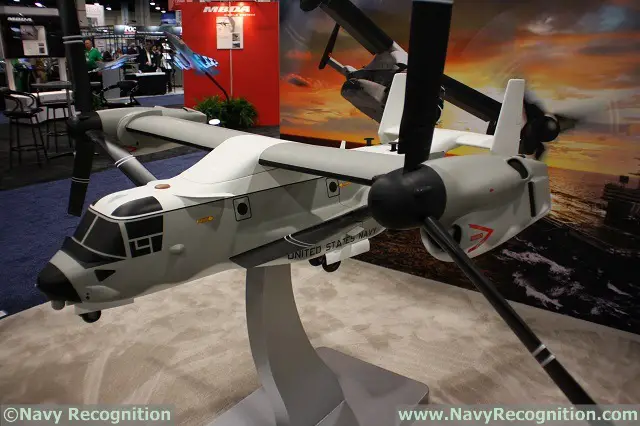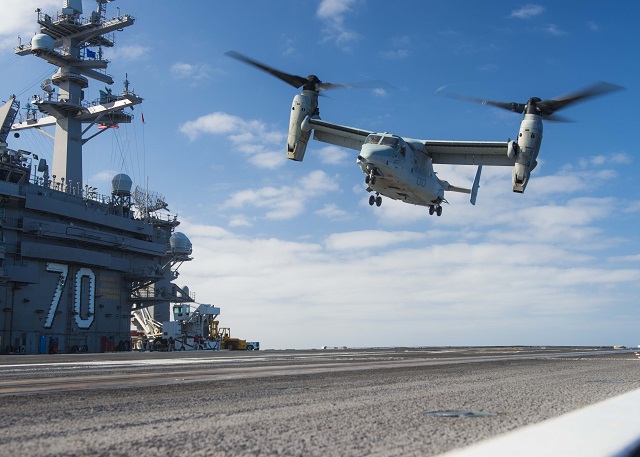 CMV-22B Osprey model in US Navy colors on display at the Bell booth during Sea Air Space 2015 |
|||
Comments by Navy Recognition
The fact that the CMV-22B will offer more flexibility than the C-2 is not surprising. The CMV-22B should have larger external sponsons to fit more fuel inside. This would be the only physical difference with legacy V-22. Currently, the U.S. Navy has planned for a total of 44 CMV-22B aircraft to be purchased. Production is expected to begin in fiscal 2018 and deliveries of the aircraft will begin in 2020. The main mission of the COD platform is to provide the Joint Force Maritime Component Commander with time-critical, long-range aerial logistics support by transporting personnel, mail and priority cargo from advance bases to the sea base. The CMV-22B will be the same as the MV-22B with three additions. It will include an extended-range fuel system, a high-frequency radio and a public address system. The Osprey secondary Navy missions should include: - Personnel recovery (including SAR) - Special warfare (with US Navy Seals) |
|||
U.S. Navy Completes V-22 Osprey Fleet Battle Experiment with USS Carl Vinson
- Posted On











